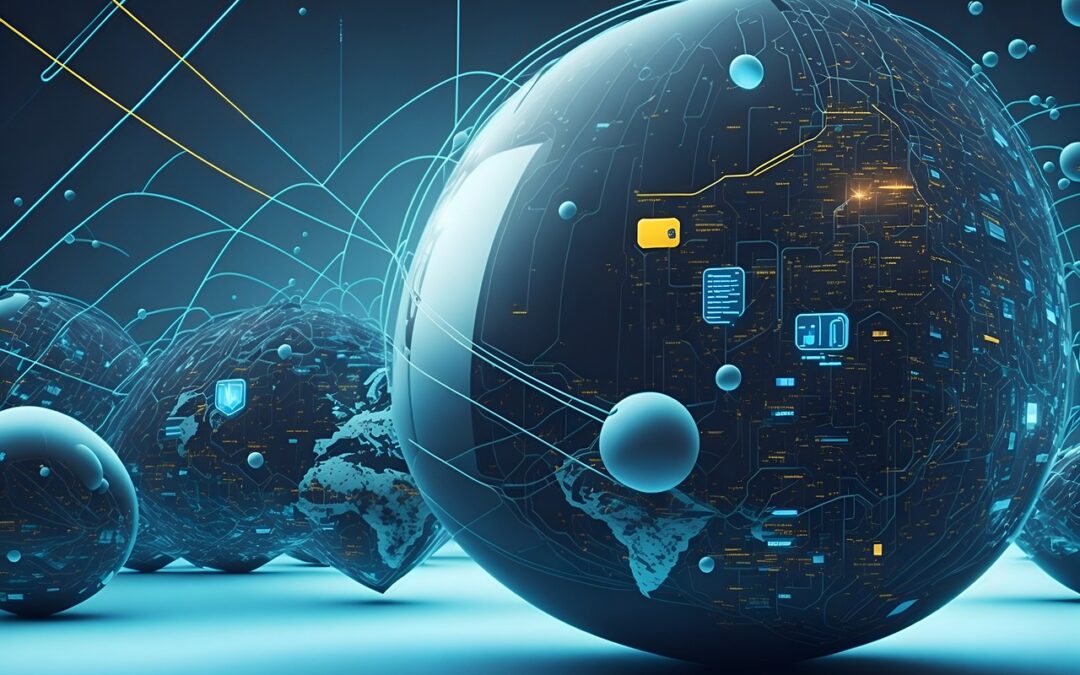The Internet of Things (IoT) technology plays a vital role in digital transformation. By seamlessly connecting devices, IoT helps modernize firms and enable enhanced business models.
According to a study by IDC on the Worldwide Future of Industry Ecosystems 2024, 55.7 billion interconnected IoT devices will create nearly 80 billion zettabytes (ZB) of data by 2025.
IoT refers to a web of linked devices through internet links. These interconnected devices can interact and share data with one another. Many firms use IoT solutions to improve their market position and the value they offer customers.
By definition, digital transformation is based on a handful of basic technologies- the cloud, AI and ML, analytics, IoT, and automation play the most critical roles in digitally transforming a firm.
While all technologies are critical for the digital transformation of a company, IoT plays an interesting role here. Its ability to connect devices helps in monitoring processes and systems seamlessly. Here is a sum-up of the role of IoT tools in the digital transformation of a company:
Benefits of IoT in Digital Transformation delivers for Enterprises
The factors below highlight how IoT benefits different areas in the digital transformation process:
Improved Customer Experience:
Remotely operated connected gadgets can help clients in real-time, worldwide. This provides notable value to customer support and interaction. In this manner, IoT also improves the customer experience.
IoT also creates highly customized experiences. Connected devices gather data, and firms analyze this process data to enhance marketing strategies. This data can deliver deep insights into customers and buying patterns.
Firms can plan on production and marketing of products and services based on data from IoT devices.
Cost Savings:
IoT can help firms reduce expenses. The use of intelligent, linked devices or data points allows for remote monitoring. It also helps in the upkeep of vital processes and assets. This helps to reduce maintenance costs over time and leads to an improvement in service quality.
Depending on the industry, IoT systems can not only simplify the operations of a firm but also predict any accidents or unexpected incidents. This will result in notable cost savings throughout project lifespans.
Quality Assurance:
Connected devices make for easier monitoring of production processes. This enables better quality control for every process. As anomalies are identified, the entire quality control process is better controlled and streamlined.
Coupled with ML and AI, these learnings also help to set the predictive abilities for future processes. The result is a continually improving QA process.
Active data about the quality results enables smarter and more efficient testing. The ML algorithms make testing a far more efficient process. The ability of each process and device to collaborate with each other highlights drawbacks but enhances efficiency.
This also allows for more effective data processing and analysis. Over time, QA teams can improve their workflows using IoT. They can cut down on the time and resources needed for IoT testing by using automated testing tools.
Safety and Security Predictions:
This is particularly useful for the utility sector. IoT sensors prioritize safety by detecting safety hazards, such as gas leaks in chemical plants.
The use of IoT vastly improves workplace safety. In fact, the benefit offered by IoT tools is so substantial that using IoT has become essential for staying ahead in the market. It helps in embracing sustainability, and staying ahead in today’s dynamic times.
IoT in workplace safety also helps to observe and address the safety and health needs of a workplace.
ESG support:
Again, in the utility sector, IoT-based metering and monitoring make the brand much more efficient. This digital transformation also has a positive effect on the environment. For example, smart meters can track energy use and help reduce waste.
There are more evolved IoT solutions that help lower energy waste, control air and water pollution, and reduce carbon emissions. IoT systems can also save costs, improve efficiency, and improve performance compared to older, non-IoT systems.
Early Issue Detection:
IoT sensors can help prevent major disruptions in operations by early detecting problems. This service is useful for many industries with high-maintenance machinery and equipment. Predicting issues can help firms plan maintenance and replacements.
In a factory, for example, machines are monitored by IoT sensors, which quickly alert when they overheat or malfunction.
Supporting Technologies that Drive IoT Digital Transformation
With an understanding of the role of IoT in modern digital transformation, it is important to examine how this transformation comes across in daily applications. Some of the ways digital transformation trends have impacted various industries are:
Blockchain
Blockchain is important for securely exchanging data in IoT. Its decentralized structure and digital security make IoT devices and apps reliable.
In the financial sector, it allows for peer-to-peer transactions with a high level of trust, eliminating the need for a middleman. Blockchain has the potential to be a key technology in the FinTech market, providing trust and security in cross-border digital connectivity.
5G Networks
5G networks will revolutionize cell phone technology by offering faster speeds, increased network capacity, and ultra-low latency. This will enable greater connectivity for the Internet of Things (IoT) and open up new opportunities across various industries.
Private 5G networks will develop further in industrial communication space. This is because they can meet high security and privacy needs by being separate from public mobile networks. Also, they also provide high-quality service and make it easier to maintain operations.
Digital Twins
By using digital twins for IoT gadgets, manufacturers can measure and enhance their manufacturing performance, determine when they need maintenance, and make the whole process more efficient.
As a result, digital twins will be very important for managing production lines, fixing issues before they happen, and make processes run more smoothly.
AI Analytics & Chatbots
AI and ML systems enable IoT devices to analyze data, identify patterns, and make forecasts based on those patterns. This improves the accuracy and use of IoT devices can assists businesses in making informed decisions.
Using chatbots to help with customer service inquiries online has reduced workloads. Additionally, AI will be further employed to secure and analyze data, and enhance the customer experience. Also, machine learning can be utilized in FIs to detect and prevent fraud.
Summing Up
The Internet of Things (IoT) is a central factor in DT. It does this by connecting devices on the same platform to grow their intuitive ability, intelligence, and usefulness. This helps firms work more efficiently, save money, and improve operations.
The Internet of Things (IoT) is evolving, providing new options for innovation and progress. This will help firms grow their operations and functions in the future.
The Internet of Things is important for firms to stay relevant in the changing digital landscape.


